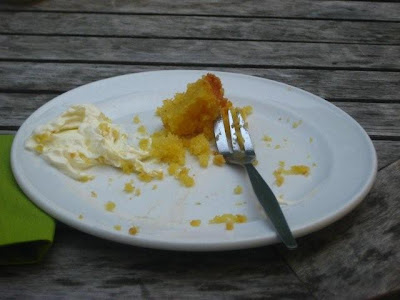During my two-week stopover in London, I visit the Chelsea Physic Garden. Situated in the heart of London, this 'Secret Garden' is described on the information booklet as 'a centre of education, beauty and relaxation'. Founded in 1673 by the Worshipful Society of Apothecaries, it continues to research the properties, origins and conservation of over 5000 species. The garden has somewhat unusual opening hours which makes it more challenging to visit, especially if one is working.

The Blue Plaque (one of over 700 in London identifying places where famous & distinguished folks have lived or worked - see Nick Rennison's The London Blue Plaque Guide)

An impression made in Victorian times of the 'demonstration' of medicinal plants in the Chelsea Physic Garden
The Chelsea Physic Garden was founded in 1673, as the Apothecaries' Garden, with the purpose of training apprentices in identifying plants. The location was chosen as the proximity to the river created a warmer microclimate allowing the survival of many non-native plants - such as the largest outdoor fruiting olive tree in Britain - and more importantly, to allow plants to survive harsh British winters. The river was also important as a transport route that linked the garden to other open spaces such as Putney Heath, facilitating easy movements of both plants and botanists.
In 1876 the Garden enlarged its educational aspirations by deciding to run a lecture course for young women who were training as botany teachers. At the end of the 19th century the trustees of the City Parochial Foundation agreed to take over the running of the Garden from the Society of Apothecaries. In 1983 The Garden became a registered charity and open to the general public for the first time.
Agapanthus
The Chelsea Physic Garden has developed a major role in public education focusing on the renewed interest in natural medicine. The Garden of World Medicine which is Britain's first garden of ethnobotany (or the study of the botany of different ethnic groups and indigenous peoples) is laid out together with a new Pharmaceutical Garden.

 The Garden of World Medicine is an ethnobotanical display that demonstrates the uses of plants by a wide variety of peoples. Here you will find plants used medicinally by the North American Indians, the Maori from New Zealand, Australian Aboriginals, Chinese, in temperate parts of India (Ayurvedic medicine), by tribal peoples of Southern Africa as well as in our own folk traditions of Northern Europe and the Mediterranean. This is not a garden of proven medical remedies, rather one that looks at the uses of plants for medicinal purposes within each culture concerned and their own views about what constitutes healing. However, in each bed you will find a plant which has been taken up and proved effective by controlled medical trials. For me, this is the most fascinating section of the garden.
The Garden of World Medicine is an ethnobotanical display that demonstrates the uses of plants by a wide variety of peoples. Here you will find plants used medicinally by the North American Indians, the Maori from New Zealand, Australian Aboriginals, Chinese, in temperate parts of India (Ayurvedic medicine), by tribal peoples of Southern Africa as well as in our own folk traditions of Northern Europe and the Mediterranean. This is not a garden of proven medical remedies, rather one that looks at the uses of plants for medicinal purposes within each culture concerned and their own views about what constitutes healing. However, in each bed you will find a plant which has been taken up and proved effective by controlled medical trials. For me, this is the most fascinating section of the garden.There is a beautiful cafe with wonderful-looking salads, fresh lemonade and other exciting delights. I am feeling a little naughty, deciding to sample the orange and polenta cake served with crème fraîche. Delicious! Looking around, I appear to be the youngest visitor by about fifty years!
Afterwards, I sit on the lawn and read a book in the sunshine - all in all, a very pleasant afternoon!














No comments:
Post a Comment